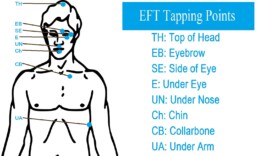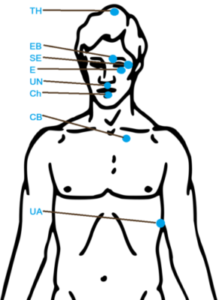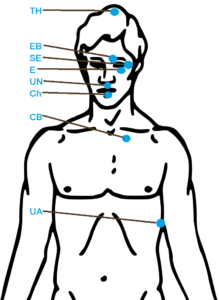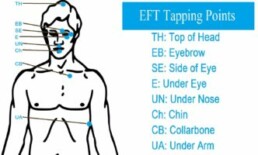How to heal from a breakup and create a life to be excited about!
Do you know someone whose heart is hurting because of a breakup? With half of marriages ending in divorce, and most relationships not ending in marriage, the chances are that you do, and that person is hurting. Learn techniques to heal from a breakup to make the process a little smoother, and a little shorter.
The grieving process
Fortunately we have tools and strategies to help the healing process. Simply learning about what to expect as we go through the grieving process can be helpful. The stages of grief (denial, anger, bargaining, depression, acceptance), so brilliantly identified by Elizabeth Kubler Ross back in 1969, are not steps we go through sequentially. When we are grieving, we sometimes feel better, but then may feel worse again. We may feel depressed, and then angry. We may also feel shock, and guilt. Knowing the emotional landscape can help us to be patient with ourselves as we keep moving forward, one (painful) step at a time.
Reframe: a great strategy to heal from a breakup
One of the best strategies to heal is to put our pain in a bigger context. What is it all for? Why is this happening? What am I to learn from this? How is this making me stronger, wiser, better than I was before? What have I gained, that I would not otherwise have gained? These questions help us take a longer view, and put our pain in a bigger context. The result: we feel empowered.
Reality Check
There is a tendency to glorify the past. We look at what we lost through rose-colored glasses. We idealize our ex, and the life we feel we have left behind. This is natural -- but it is not necessarily true! If your relationship had been wonderful, you would still be in it. Your ex was not perfect for you; your ex is not the only man or woman in the world that you could ever love. Think about it -- the loving feelings you experienced were, after all, YOUR feelings. You can feel them again, right now, if you let yourself go there. Your ex is not needed! And since those feelings are yours, you can bestow that grace on someone else, when the time is right, when you have learned what you needed.
Forgiveness
Forgiveness is a choice: a choice that empowers us, and can set us free. Forgive your ex, and you can cut those ties that are binding you to the past. Forgive yourself, and you will have grown by leaps and bounds. Forgiveness puts things in order. Practicing forgiveness is giving yourself the keys to the kingdom. Forgiveness does not mean that nothing was "wrong" or that you are condoning being mistreated. It doesn't mean you want to continue in the relationship. It means that the wiser part of you recognizes that everyone is pretty much doing the best they know how to do, given their unhealed wounds and traumas from the past. Feeling hurt, we are called to remember: forgiveness is divine.
Heal from a breakup and create a life to be excited about!
When we take our grieving in hand, and shepherd ourselves through the process, we avoid the pitfall of wallowing in self-pity, of anger, of victimhood, of disempowerment. We can turn our pain into something of meaning; we can have more compassion for others; we find out we are stronger and more resilient than we would otherwise have believed. We are able to fill ourselves up with grace and optimism and empowerment. From that place, we can create a life that we can be excited about.
If you know someone who is going through a breakup, please share these thoughts. Having one's heart broken is awful. It is also common. Knowing that we are not alone, and that someone cares, can go a long way toward healing. For a little extra help, check out my Udemy course, Healing from a Breakup. I explore these ideas and support each module with energy psychology and guided meditations. The video course allows me to "walk beside" people who are healing from heartache, and guide them through their healing process. And when you need more help, you might like to work with me.
With many blessings for peace and healing,
Sarah
PS- the image is by Kelly Sikkema on Unsplash
Breast cancer and the LoA: Please don't be afraid to feel afraid
In my therapy practice in Bryn Mawr, I work with women who have breast cancer. They are often afraid of their fear: the Law of Attraction has become a monster for them. The issue is the LoA and how it applies - and does not apply - to getting and fighting cancer.
I have studied the LoA for years. There is a lot of (I believe rather immature) stuff on the internet about the LoA. "Think well and you will be well", the teaching goes. I think it grossly oversimplifies the case.
And worse, I think it freaks people out.
Is there nothing to fear but fear itself?
So many women I work with are freaking out because they are scared, and they are scared of being scared. This puts them in a bind. They can't begin to grapple with the fear, move through it, and let it move through them, because they are afraid that in being afraid they are making themselves sicker.
Because they are afraid of the power of their fear they don't allow themselves to express it. Consequently, their fear has no way out. It grows in the darkness. And worse, these women feel shame because they have fear.
For most of us, a cancer diagnosis is @%*&# scary.
And then things get better. Most of the time – by far, most of the time – my clients do, too. They learn about treatment options and they start the marathon. They find out that the sun still rises and they still laugh and have fun.
The marathon ends and they reflect on how much they have gained: they know a lot about mindfulness and meditation, complementary therapies, nutrition and natural beauty products. They have learned to tell the people they love that they love them. They don't sweat the small stuff.
But for many women with breast cancer, the road to recovery is fraught with the boogey man named the Law of Attraction. They come to me and cry: I am afraid, and worse, I am afraid of being afraid; I'm afraid that my fear is killing me. If I let myself feel afraid, am I making my cancer grow? I am afraid to let myself feel afraid, and yet I'm still afraid. I have no power over this fear. It feels like life and death.
Don't suppress your emotions.
I don't pretend to have all the answers. But I know my clients. I read the research, I talk to people, and I listen. And I can tell you that there is not a shred of evidence that feeling afraid makes people sicker. On the other hand, there is research, including a study of 94 women with recurrent or metastatic breast cancer, showing that unprocessed trauma hurts.
David Spiegel, M.D., one of the study authors, says “people do better in the aftermath of traumatic stress if they deal with it directly. Facing, rather than fleeing it, is important… In other words, don’t suppress your emotions (emphasis mine).”
Please. Don't. Suppress. Your. Emotions.
Emotions are not "good" or "bad". What we do with them, however, has consequences. Suppressed emotions can cause some serious mischief. Keeping our fear pushed down is exhausting. And it's inauthentic. And we can't heal what we can't allow ourselves to feel.
I think that having a dialogue with our feelings is healthy. In English we say "I AM afraid". Other languages express it as "I HAVE fear", and there is a certain mindful distancing that comes from framing our emotions this way.
What I want to say to my clients, to all the women who are fighting the fight, to you, is this:
Please don't punish yourself by fearing your fear. Let yourself feel your feelings. Let the fear move through you. You will find yourself on the other side of that feeling and see how much you have grown.
EFT Quick Start Guide
EFT, the Emotional Freedom Techniques, is a member of the energy psychology (EP) family of psychotherapies. These therapies combine Western psychology methods, mainly drawing on cognitive and behavior principles, with Eastern energy-based healing principles, including acupoint stimulation and chakra balancing. This mind-body approach allows EP techniques to facilitate rapid, positive change. EFT involves acupoint tapping with exposure to an emotionally-charged memory. In my therapy practice in Bryn Mawr, clients are making big changes with EFT.
What is EFT?
EFT combines acupoint stimulation with exposure to an emotionally-charged memory or experience. EFT is built on the theory that every emotional problem is rooted in a block in the energy system because any traumatic event, no matter how seemingly insignificant, can cause a blockage in an energy meridian. This blockage can be thought of as similar to a droplet of water inside a drinking straw. Just as we can tap on a straw to release a trapped water droplet, we can tap on an acupoint to remove a block from the meridian.
EFT can be used as a self-help tool as well as in clinical therapeutic settings. It is an effective tool for working with specific traumatic events, such as accidents and medical diagnoses, as well as more broad-based and seemingly intractable issues, such as depression or low self-esteem. We conceptualize this type of broader issue as a "table top" which is supported by traumatic, though often seemingly insignificant, life events or "table legs". Using EFT, we remove each of the table legs until the table top collapses.
The EFT Protocol
In EFT, we tap on the side of the hand while repeating a setup statement: "Even though I have this problem, I deeply and completely accept myself." Then we tap on a series of points while just repeating the problem: "But I have this problem." Before tapping, we assess our subjective units of distress (SUDS). After one round, or several rounds, of tapping, the SUDS will lower to a 0 or 1.
What Does the Research Say?
Researchers in Seoul, South Korea have identified a physical substrate in the body, composed of very small blood vessels, which correspond with the acupuncture meridian system. These vessels comprise what researchers have named the primo vascular system, and seem to transport biophotons, or biologically emitted photon beams of light. This may be the first scientific explanation of the flow of chi.
While researchers in the East have been studying the body's energy system, researchers in the West have been studying the effects of EP, including EFT. More than 100 studies have been published in peer-reviewed journals, and 98% have found energy psychology modalities to be effective. To date, four meta-analyses have been conducted, demonstrating a moderate to strong effect size. In the past five years alone, more than fifty studies have found EFT and similar meridian-tapping therapies to be effective for treating depression, PTSD, other anxiety disorders, food cravings, pain, and other physiological symptoms, including blood sugar management and side effects of cancer treatment drugs.
The Takeaway
EFT involves tapping on acupoints while remembering a traumatic event from the past, or while experiencing upset in the present. It is safe and easy to learn, and is an effective tool to relieve many forms of emotional and even physical distress. It may be the best psychotherapy you'd never heard of! Ready to learn more? Get in touch to start your journey to a happier life today.
EFT, the emotional freedom techniques
EFT, the emotional freedom techniques, is a simple, evidence-based technique that can help us resolve our emotional issues quickly and easily. In EFT, we tap on a series of acupressure points while thinking about an issue. In my therapy practice in Bryn Mawr, I have helped many clients make big changes using this simple process.
How to do EFT
When we start tapping on a problem, we might rate our emotional upset at near a 10 on a scale of 1-10. By the time we finish tapping, maybe repeating the series a couple of times, our emotional upset will disappear or nearly disappear, down to a 0 or 1. The whole process can take just a couple of minutes.
What counts as a trauma? "Big T and Little t" Traumas
Most of the time, our big emotional blocks - things like low self-esteem, thinking we are undeserving or unlovable, or even being afraid to drive on a highway - are actually built up over time because of traumatic events in our past.
This does not mean that we have all had huge traumas. Sadly, many people have had "big-T" traumas - things that involve violence, accidents, shock. But for most of us, it's the "little-t" traumas that cause our problems.
"Little-t" traumas are things that are upsetting or incidents that we interpret in an unhelpful way. These can be things like "the time Dad yelled at me", "the time my classmates all laughed at me", "the time I failed the spelling test", etc. Built up over time, these can become the pillars that underlie our larger issues.
The table metaphor
In EFT, we use the metaphor of a tabletop and table legs. The over-arching problem, like low self-esteem, can be thought of as a tabletop; it is being held by the unresolved issues, or "table legs". Best-practice for EFT is not to treat, or "tap on", the tabletop, but rather to tap on the legs. We break its legs, and the table collapses.
Each of these "legs" can be conceptualized as a movie that lasts about two minutes, with a beginning, middle, and end. The movie can have a few crescendos. Each of those crescendos are appropriate for our EFT tapping intervention.
Our tables may be held up by ten different legs. Not all of the legs are equally strong. Some legs we rate at a 10 on a scale of 1-10; others may only rate as a 2 or 3. Interestingly, after we treat one or two of the legs, all the other legs seem to get a little smaller until the whole problem is resolved. If we have identified ten "legs" that underlie a problem, we may treat just six of them for the problem to get resolved.
The Recipe
Want to give it a try? The picture below shows the EFT tapping points. The basic EFT "recipe" is this:
Begin by tapping, using all your fingers of one hand, on the outside of your other hand while repeating the setup statement and affirmation below. Do this two times:
Even though I have (this problem), I deeply and completely accept myself.
Then tap on the points while repeating the problem:
But I have this problem...this problem...this problem that's an 8 on a 10-scale...this time that ______...this ____ problem ... this 8 ...this time that _____ ... this problem
EFT Tapping Points
TH: Top of Head
EB: Eyebrow
SE: Side of Eye
E: Under Eye
UN: Under Nose
Ch: Chin
CB: Collarbone
UA: Under Arm
More information
There are lots of websites, YouTube videos, and books about EFT. While EFT can be used effectively on your own, using EFT in a clinical setting with a trained therapist is even more powerful. This may partly be true because when we think about traumatic incidents from our past it can be hard for us to stay focused and follow the process clearly. When there is another person to hold the space, keep calm, and guide you through the process, EFT is very powerful.
If you would like to learn more about EFT, shoot me an email or give me a call. You can also check out the website of its founder, Gary Craig, at www.emofree.com.
Peace on earth begins with peace at home
The following article was published in the summer 2017 issue of The Beacon. In my therapy practice in Bryn Mawr, I try to bring this perspective in all my work with clients.
The effort to establish right human relations is helpful, indeed essential, in integrating the personality with the soul. The lack of “right relations” comes most often from a selfish attitude and an emotional body that is not held steady in the light. It is disharmony in personal relations that very often causes a person to decide that he or she must get hold of him- or herself and make some changes. Our relationships are indeed our greatest teachers.
The desire and the need for harmonious relationships is quite often the thing that puts us on our Path. The pain we feel as a result of disharmony is a real pain; brain imaging studies show that physical and emotional pain “light up” the same regions of our brains. What’s worse, the pain we feel when we are the perpetrator of disharmony is like added salt in our painful wound; we feel embarrassed, ashamed, or guilty, in addition to our angers and fears. This is a powerful combination that makes most eventually decide that Something Must Be Done.
The work, once committed to, involves a complete reorientation of thinking – away from oneself as victim, toward oneself as creator. When taking stock, we learn to reframe our point of view to include perspective-taking and empathy for the Other. We begin to practice “not taking it personally” and to recognize that when our emotions are getting riled up, it is not actually about the Other person, but about some wound in our own Self that is needing to be healed. We begin to have compassion for ourselves and to forgive ourselves ― that is an essential piece of personality integration. No longer can the mind spend oodles of energy denigrating the emotional body; instead the ego learns to befriend the inner child and to work with it, to heal it and create peace rather than continuing disharmony.
As we practice detachment, not taking things personally and not assuming that we know what the Other is thinking or feeling, we begin to task ourselves with cultivating Right Speech. We begin to be careful with our words, which slows down our emotional reactivity. Our relationships increase in harmony. With more harmony, we are able to create a spaciousness that allows us to strive for utter harmlessness and self-forgetfulness. The body relaxes; health ensues. The seven points of light begin to radiate and we become a fit vehicle of expression for the Soul.
When we have committed ourselves to a spiritual path, our lives change in incredible ways. The old emotional reactions and underlying assumptions give way to a light and peaceful experience. The very intention to bring more “spirituality” into our lives does indeed invite light, and love, and goodwill. These are the cause and effect of establishing right human relations.
A constant reorientation to spiritual values changes a person. At the moment we decide that there Must Be Something More, and determine to find it, our lives change course. A meditation practice may be the single most important tool for self improvement, and such a practice can be hung on the scaffolding of just about any religious or non-religious tradition. Whether we are searching for Peace through mindfulness or are devoted to the Buddha-nature, the Christ, Ishvara, the Divine, or the Beloved doesn’t matter. We begin to ascend the mountain and as we climb, we find that all of our paths converge.
With this awakening of inclusiveness, there can be no denigration of another spiritual tradition, no room for thinking “my way is the Right Way, and yours is, say, a ‘political ideology’”. From our place of inclusiveness we gain empathy and search for the reasons why people behave, often badly, the way they do. Rather than condemning and judging, we seek to understand and to aid, even as perhaps we wish that the reins of power were held by more-evolved hands. Yet we find solace in knowing that we all learn through pain – individuals and groups alike,
As we work to invoke the Soul, not only do our worldly views become larger and more inclusive, our close personal relations become more peaceful as well. We cannot but feel hypocritical if we make a fuss about a spiritual practice and then yell at our kids and criticize our spouses. Any momentary experience of mystical union rings hollow if followed by a fight at home. The Love of the Soul has made its healing felt in every level of our personality-being and we begin to love and forgive ourselves, and from that peaceful place it is impossible to not-love or non-forgive others. And incredibly, when others criticize us we are far from defensive but rather seek to understand and find common ground. Exuding peace and love, others want to know how did we do that? Having sought the Light, the Light of the Soul has made its presence known and we are changed, and we are agents for change. Our seven centers begin to blaze and light our way, and light the Way for others.
EFT for PTSD
A treatment for PTSD (posttraumatic stress disorder) that uses no drugs, has no side effects, and really works―does that sound too good to be true? Research shows that such a treatment does indeed exist. EFT, the emotional freedom techniques, can resolve PTSD symptoms in as little as five sessions. Kaiser Permanente, one of the largest hospital systems in the US, just published clinical guidelines for using EFT to treat PTSD. The guidelines were created by Dawson Church and colleagues, after reviewing the literature and surveying 448 practitioners to see how clinicians are getting results. Their recommendation: five to ten sessions of EFT for people with PTSD. EFT works for PTSD. I use it in my therapy practice in Bryn Mawr.
PTSD: military, accidents, and beyond
We often think of war veterans when we think of PTSD, as well we should: the VA estimates, conservatively, that between 11% and 20% of veterans who served in Iraq and Afghanistan have PTSD (other sources put the rate at closer to 30%). The rates are even higher among Vietnam War veterans, with nearly a third suffering from PTSD. But PTSD is not just a problem for the military. Indeed, it can affect people who have been in any traumatic situation: those who have been in serious accidents, victims of violent crimes, or diagnosed with life-threatening diseases can develop PTSD; the death of a loved one can cause PTSD-like symptoms.
PTSD prevalence
Nearly 8 of every 100 Americans are likely to experience PTSD during their lifetimes. Most people will go back to normal after a traumatic event, but some will develop symptoms that last more than a month (subclinical PTSD) or three months (clinical PTSD) and that interfere with their lives. The symptoms involve avoiding or "numbing out"; re-experiencing, often with nightmares or flashbacks; and some type of hyper-arousal, like being easily startled, on edge, having trouble sleeping, even having angry outbursts.
Treating the "un-treatable"
After World War II, people used the term "shell shocked" to describe the symptoms of PTSD. For decades, it was believed that veterans could not recover from PTSD. More recently, researchers have been looking for ways to resolve the previously "unresolvable". Pharmaceuticals have not been an effective solution. In a creative move, the US government invested millions of dollars in a virtual reality technology to help veterans with PTSD. But that program is only available to some veterans, and is very costly and hard to replicate. EFT is effective, safe, has no side effects, all for the price of a therapy session ― except for veterans, who can get services for free through The Veterans Stress Project.
To learn more about EFT and other kinds of energy psychology, see emofree.com, energypsych.org, and my website, transformative-therapy.com. EFT for PTSD can get your life back on track.
Energy Psychology, EFT: A Mind-Body Approach
Energy Psychology (EP) is a family of therapies that combine Western psychology methods with Eastern energy-based healing principles. This mind-body approach allows EP to facilitate rapid, positive change. The most common form of EP is EFT, the emotional freedom techniques. More than 100 studies published in peer-reviewed journals document the effectiveness of these simple energy-based techniques.
The Meridians and Related Emotions
Understanding EP begins with an acceptance that we are more than meets the eye. Everything is energy, as the saying goes! For instance, acupuncturists have worked with meridians for thousands of years. In a nutshell, meridians can be though of as little energy highways that run through our bodies, carrying energy through our system. According to Traditional Chinese Medicine, each meridian is associated with a specific emotion or set of emotions. Because of this, you can release an emotional block (or a problem) when you stimulate its associated treatment point by tapping or rubbing it.
Here is a rundown of the meridian points and related emotions.
| Treatment Point Location | Meridian | Related Emotions | |
| GV | Above the mouth | The Governing Vessel | Associated with self esteem; moving forward |
| CF | Below the mouth | the Central Vessel | Associated with shame; launching new projects |
| BL | Inside eyebrow corner | Bladder | Trauma; aggravation, irritation |
| GB | Outside corner of the eye | Gallbladder | Visceral anger: rage, fury, wrath |
| ST | Under the eye | Stomach | Fear, anxiety |
| KI | Just below the collarbone notches | Kidney | Anxiety |
| SP | Under the armpits | Spleen | Worry |
| LV | Bottom rib, under nipple | Liver | Anger |
| LU | Thumb: outside corner of the nail | Lung | Grief |
| LI | Index finger: outside corner of the nail | Large intestine | Guilt |
| PC | Middle Finger: outside corner of the nail | Pericardium | Life-flow; sexual issues |
| HT | Pinky Finger: outside corner of the nail | Heart | Anger about a specific issue |
| SI | Outside edge of the hand | Small intestine | Vulnerability, sadness |
| 3W | Back of the hand, between the 4th and 5th metacarpals (leading to pinky and ring fingers) | Triple warmer
(thyroid) |
Pain, depression |
The Meridian Treatment Points
Face/Head Points
|
Torso Points
|
Hand Points
|
The Research
Peer-reviewed professional journals have published more than 100 research studies demonstrating the effectiveness of EP therapies. Importantly, this includes not just one-offs and case studies, but more than 50 randomized controlled trials, 40+ outcome studies, and four meta-analyses. (A meta-analysis depends on a pretty large group of studies, which are combined in order to draw conclusions with greater confidence.)
One striking study of veterans with PTSD showed that PTSD symptoms dropped after EFT treatment; after 10 sessions all the veterans were free from clinically diagnosable PTSD. This is so important, because we used to think PTSD was not treatable. More recently, the US government invested millions in a virtual-reality PTSD treatment center, which is cool -- but not very practical. The center is outside of DC, and did I mention expensive? Yet there are so many people who need treatment all over the country. EFT is a low-cost intervention which is simple, effective, and has virtually no negative side effects. In addition, clinicians and researchers have used EP to treat addictions, anxiety, depression, food cravings, phobias, sports performance, and stress.
EFT: The Emotional Freedom Techniques
One of the most common techniques in Energy Psychology is EFT. To use EFT, begin by bringing your problem to mind and allowing yourself to feel the emotions related to the problem. Then try to identify which emotion you feel most strongly. Rate that emotion on a 0-10 scale, with 0 meaning the problem does not exist, and 10 is the worst you've experienced.
Next, start tapping on the side of the hand, using all fingers from the other hand, while you repeat the setup statement (the problem, and an affirmation):
"Even though I (have this problem), I deeply and completely accept myself."
|
Then tap the points while repeating the problem, using related statements such as "It feels terrible, it feels awful, I can't believe it, I feel so bad…"
Tapping sequence:
- TH Top of head
- EB Eyebrow corner
- SE Side of eye
- E Under eye
- UN Under nose
- Ch Chin, Under lip
- CB Collarbone
- UA Under arm
When you've finished tapping, take a deep breath, and reassess the problem on a 10-scale. If you have not achieved a "0", tap another round. Continue working until you have reached a 0.
The Gayatri: Most Ancient Mantram
The Gayatri is said to be the most ancient mantram known to humankind. It is a statement of aspiration and devotion, placing us on the sacred path of return.
Several English translations exist. I learned the following one years ago. It was given by the Tibetan master, Djwhal Khul.
Oh Thou Who givest sustenance to the Universe
From Whom all things proceed
To Whom all things return
Unveil to us the true Spiritual Sun
Hidden by a disk of golden light
That we may know the truth
And do our whole duty
As we journey to Thy sacred feet.
The dual emphasis on knowing the truth and doing our duty are significant. It seems to me that to have knowledge without applying it is useless; and work without knowledge is fruitless. I think that the spiritual path encompasses both.
Yoga students and kirtan enthusiasts may be familiar with the Gayatri, which has been beautifully recorded by Wah! and Deva Premal. Next time you hear one of their beautiful recordings, you will have some meaning to attach to it!
Past Life Regression Story
Past-life regression therapy with healing can be very powerful tools, helping to accelerate our personal growth and spiritual expansion. We are able to re-pattern old habits of thinking and feeling that have their root in the distant past, becoming free and effective people in the present. I am passionate about the benefits of this healing technique and have often used regression with healing with clients in my therapy practice in Bryn Mawr. It has been an important part of my own journey as well.
A personal tale
One of my most interesting past-life regression and healing experiences happened about a decade ago. During the session, I retrieved a lifetime in which I was a young sailor, a boy not more than 15 years of age. I was climbing the mast of a tall ship and my foot got caught in the rigging; I lost my footing and fell. I was badly injured with a broken hip.
As the regression proceeded, I saw that I went on to live as a disabled person. In those days, that meant that I became a "beggar". I was left with deep self-esteem issues that continued to plague me in this lifetime. And, interestingly, I have a huge bruise-like birthmark on my hip.
Healing
Since the regression and healing session, I have changed in important ways. The birthmark is still on my hip; I still get dizzy when I look up at tall buildings. But my self-confidence began to improve almost immediately. I remember having two important and conflicting thoughts after the session: One, I was very skeptical that this had really happened! And secondly, I felt more comfortable in my own skin. Years later, I find myself looking back on this session as one of the most significant experiences of my journey.
Energy Psychology Research
Transformative Therapy is a private therapy practice in Bryn Mawr, PA. We specialize in working with clients who have cancer and other serious illnesses. We offer a holistic approach to therapy including hypnosis and energy psychology. This article summarizes energy psychology research. This is a set of mind-body techniques that combine Western psychology with Eastern energy-based principles.
Energy Psychology
Energy psychology (EP) is a collection of methods that improve emotional and psychological functioning by combining cognitive techniques, such as imagery-based therapy and mindfulness, with physical methods derived from acupuncture and other Eastern systems (Feinstein, 2012; energypsych.org, 12/27/2012).
Research has shown that EP techniques are effective for treating psychological issues such as depression, anxiety, phobia, and posttraumatic stress disorder (PTSD). It is also effective for some physical problems such as chronic pain.
Research on EP has been conducted around the world and supporting evidence has been published in more than 20 independent, peer-reviewed scholarly journals.
Types of energy psychology techniques
There are various forms of energy psychology. The most well known forms focus on tapping or otherwise stimulating acupuncture meridian points (acupoints) while focusing on emotion-evoking stimuli. These meridian-based EP techniques include Emotional Freedom Techniques (EFT), Thought Field Therapy (TFT), Energy Diagnostic and Treatment Methods (EDxTM) and Tapas Acupressure Technique (TAT).
Energy psychology and the broader system of energy medicine have become increasingly popular with consumers and providers of mental health services (Lumadue, Munk and Woodten, 2005). This follows the broader trend of complementary therapies’ popularity among health care consumers (Eisenberg, 1998). The 2007 National Health Interview Survey found that 38% of American adults use some form of complementary/alternative medicine. Global rates are sometimes higher, with the World Health Organization reporting rates as high as 48% in Australia, 70% in Canada, and 75% in France.
Over a million people have downloaded The EFT Manual and The EFT Mini-Manual (Feinstein, 2009). In the U.S., many accredited continuing education programs for counselors include EP and other complementary and alternative practices (Lumadue, Munk and Wooten, 2005). In late 2012, the American Psychological Association approved the Association for Comprehensive Energy Psychology (ACEP) as a provider of continuing education credits for psychologists.
Consumers of mental health services should be aware that, because energy psychology is a relatively new field within psychology, we do not yet fully understand how it works. Critics claim that any treatment effects from EP modalities may result from placebo or other nonspecific therapeutic factors. However, current research suggests that well understood mechanisms of action are responsible for the observed effects (see below).
History
During the 1960s in the U.S., chiropractor George Goodheart developed applied kinesiology, an alternative field that involves the manual testing of muscles (Rosner and Cuthbert, 2012). He began teaching it to other chiropractors in the mid-1970s. John Diamond used applied kinesiology techniques for psychological purposes. Roger Callahan became interested in Goodheart’s techniques, which inspired the creation of Callahan Techniques ® Thought Field Therapy, the original meridian tapping therapy. Several of Callahan’s students went on to develop other forms of meridian-based EP techniques. Gary Craig created the Emotional Freedom Techniques after training with Callahan in the early 1990s, and various other clinicians added to the field with the creation of a dozen techniques that have in common the tapping on acupressure points (Gallo 2002). Meridian-based EP draws on traditional Chinese medicine, which identifies acupuncture meridians and acupoints. Traditional Chinese medicine has been practiced for thousands of years, and has become increasingly popular in the West within the last few decades. A growing body of research points to the efficacy of acupressure and acupuncture, and the World Health Organization lists it as an effective and often proven treatment for a variety of physical and mental health concerns (WHO, 2013).
Research
Research on EP has followed American Psychological Association (APA) Division 12 Criteria (Feinstein, 2012). These criteria stipulate that for a treatment to be considered empirically effective it must be demonstrated to be superior to an established treatment in two randomized controlled trials. If a treatment is found to be superior to a control group, it is considered “probably efficacious”. The difference must reach the level of statistical significance, or p <.05. This means that there is less than a 5% chance that the results are due to chance. In his comprehensive review of the literature on energy psychology, Feinstein (2012) describes 18 randomized controlled studies. All of them reported statistically significant changes from pre- to post-treatment. All of these studies used self-report inventories, and half also included objective measures such as structured clinical interviews, physiological markers such as salivary cortisol levels, and observable measures such as body weight.
By treatment condition
Emotional Distress
Energy psychology techniques have been found to be effective in treating emotional distress. A study of workshop participants who received EFT showed very significant improvement on all scales of distress, and the changes held at six-week follow-up (Rowe, 2005). Church and Brooks (2010) tested healthcare workers attending EFT workshops, and found significant improvement on all scales; the gains held at three-month follow-up. Palmer and Hoffman (2011) also found significant improvement on a range of emotional symptoms after EFT workshops, and the results held on follow-up.
Anxiety
Energy psychology has shown efficacy in several studies of anxiety. In the largest study of EP, Andrade (Andrade & Feinstein, 2004) studied approximately 5,000 patients with anxiety disorder and found that EFT yielded significant decreases in anxiety; 90% of EFT patients had a reduction in symptoms and 76% were symptom-free, and the results held at follow-up. A randomized control trial by Irgens et al (2012) found significant relief of anxiety symptoms following TFT treatment. Other studies found significant results with public- speaking anxiety (Schoninger & Hartung, 2010; Jones et al, 2010). Rubino (2012) and Benor et al (2009) found significant improvement using EP techniques to treat test-taking anxiety.
Depression
Randomized control trials that measure depression before and after treatment find that EP methods yield significant drops in depressive symptoms. Church, DeAsis & Brooks (2012) studied moderately to severely depressed college students and found mood in the normal range after four EFT sessions. Other studies have found significant improvements in depression among healthcare workers (Church & Brooks, 2010), veterans (Church, 2013), and fibromyalgia sufferers (Brattberg, 2008).
Phobia
EP has found statistical significance in treating phobias. Three randomized control trials using EFT (Salas et al, 2011; Baker & Segal, 2010; Wells et al, 2003) and one using TFT (Darby & Hartung, 2012) found that a single session can resolve a phobia, and that the results last.
PTSD
Several studies, including three randomized control trials, have found that energy psychology methods produce significant relief for people with PTSD. Church et al (2013) studied 59 veterans with PTSD. After treatment, 90% of the EFT group no longer met diagnostic criteria for PTSD, compared to just 4% in the wait list group. Several studies have found EP (TFT) leads to highly significant reduction in trauma among survivors of the Rwandan genocide (Sakai et al, 2010; Stpme et a;. 2009; Stone et al, 2010). A study conducted in Britain compared EFT to Eye Movement Desensitization and Reprocessing (EMDR), and found both treatments to produce significant therapeutic gains at post-treatment and follow-up (Karatzias et al, 2011).
Theory
All energy psychology methods include three core components: exposure to the psychological or emotional issue, generally achieved by calling it to mind; cognitive interventions, such as affirmations; and some type of energy intervention, whether meridian-based, energy-center-based, or biofield-based.
Meridians
The exact mechanisms for the effectiveness of EP are not well understood. One underpinning of the meridian-based EP techniques is the theory of the energy meridian system of traditional Chinese medicine. According to this theory, energy known as qi or chi flows through the body in pathways called meridians. A block in the flow causes distress or disease, and a release of the blockage brings relief (Baker, 2009). This theory, however, is yet unproven.
There have been studies supporting the existence of acupoints and meridians through electrical conductance in the skin (Prokhorov et al, 2006); however, there are no known studies demonstrating the correlation between alterations in the acupoints or meridians and changes in disease conditions (Baker, 2009). While the concept of acupoints and meridians is somewhat foreign to many Westerners, and has not been proven by Western scientific method, it is a cornerstone of traditional Chinese medicine, and has been widely practiced for thousands of years and researched over the past several decades.
The World Health Organization recognized acupuncture as “proved - through clinical trials - to be effective” in treating more than two dozen medical and mental health issues including depression, and shown to be effective but needing further proof for more than five dozen medical and mental health issues.
Acupressure
Much research has focused on acupuncture, and acupressure, its non-needle counterpart, is said to work in much the same way. A comparison of acupuncture to non-needle stimulation of acupoints found non-needle stimulation to be as effective as standard acupuncture (Cherkin et al, 2009). Acupressure has been shown to reduce stress hormone levels (Cabyoglu, Ergene, and Tan, 2006; Eshkevari, 2003).
Memory
Another key to understanding the efficacy of energy psychology may lie in memory reconsolidation, the process in which the retrieval of a memory returns the memory to a labile state, which is then subject to restabilization (Forcato et al, 2009). When recalled, memories become temporarily unstable and changeable (Besnard, Caboche, Laroche, 2012). Memory retrieval therefore provides an opportunity for memory plasticity, or changeability; reconsolidation after recall provides an opportunity to update memories.
Ecker et al (2012) identify three steps for memory reconsolidation: vividly access emotional memory, juxtapose that memory with a contradictory experience, and verify that change has occurred. Most EP interventions incorporate activating a psychologically arousing thought or memory while juxtaposing the arousal with the calming effect that comes from stimulating acupressure points.
According to Lane (2009), the stimulation of acupressure points activates the parasympathetic nervous system by regulating stress hormones and activating the parasympathetic nervous system. The mechanism for meridian-based EP techniques may be conceptualized as counterconditioning of a traumatizing thought or emotional trigger with a feeling of calm, activated by acupressure point stimulation.
Learn more
If you are interested in learning more about energy psychology research, visit the Association for Comprehensive Energy Psychology research section.
References
Andrade, J., & Feinstein, D. (2004). Energy psychology: theory, indications, evidence. In D. Feinstein, Energy psychology interactive (Appendix, pp. 199-214). Ashland, OR: Innersource.
Baker, A. H., & Siegel, M. A. (2010). Emotional Freedom Techniques (EFT) reduces intense fears: A partial replication and extension of Wells et al. Energy Psychology: Theory, Research, & Treatment, 2(2), p 13-30.
Baker, H., Carrington, P., Putilin, D. (2009). Theoretical and methodological problems in research on Emotional Freedom Techniques (EFT) and other meridian-based therapies. Psychology Journal, 6 (2), 34-46
Besnard, A., Caboche, J., and Laroche, S. (2012). Reconsolidation of memory: a decade of debate. Progress in Neurobiology, 99 (1), 61-80.
Brattberg, G. (2008). Self-administered EFT (Emotional Freedom Techniques) in individuals with fibromyalgia: A randomized trial. Integrative Medicine: A Clinician's Journal,Aug/Sep, 30-35.
Cabýoglu, Mehmet Tugrul; Ergene, Neyhan; Tan, Uner (2006). The mechanism of
acupuncture and clinical applications. International Journal of Neuroscience, 116 (2), 115-125. DOI: 10.1080/00207450500341472. Chambless, D., Baker, M., Baucom, D., Beutler, L., Calhoun,K., Crits-Christoph, P., Daiuto, A., DeRubeis, R., Detweiler, J., Haaga,D., Bennett Johnson, S., McCurry, S., Mueser, K., Pope,K., Sanderson, W., Shoham, V., Stickle, T., Williams, D., & Woo, S. (1998). Update on Empirically Validated Therapies, II. The Clinical Psychologist, 51 (1), 3-17
Cherkin, D., Sherman, K., Avins, A., Erro, J., Ichikawa, L., Barlow, W., Delaney, K., Hawkes, R., Hamilton, L., Pressman, A., Khalsa, P., Deyo, R. (2009). An RTC comparing acupuncture, simulated acupuncture, and usual care for lower back pain. Archives of Internal Medicine, 169 (9), 858-866.
Church, D., DeAsis, M., & Brooks, A. (2012). Brief group intervention using Emotional Freedom Techniques for depression in college students: A randomized controlled trial. Depression Research and Treatment, 2012 (2012), DOI 10.1155/2012/257172
Church, D., Hawk, C., Brooks, A., Toukolehto, O., Wren, M., Dinter, I., Stein, P. (2013). Psychological Trauma Symptom Improvement in Veterans Using Emotional Freedom Techniques: A Randomized Controlled Trial. Journal of Nervous and Mental Disease, 201 (2), 153-160
Church, D. Geronilla L. & Dinter, I. (2009). Psychological Symptoms Change In Veterans After Six Sessions of Emotional Freedom Techniques (EFT): An Observational Study. International Journal of Healing & Caring, 9(1), 1-13.
Church, D., Pin˜a, O., Reategui, C., & Brooks, A. (2012). Single session reduction of the intensity of traumatic memories in abused adolescents after EFT: A randomized controlled pilot study. Traumatology, 18 (3). doi:10.1177/1534765611426788
Church, D., & Brooks, A. J. (2010). The effect of a brief EFT (Emotional Freedom Techniques) self-intervention on anxiety, depression, pain and cravings in healthcare workers. Integrative Medicine: A Clinician’s Journal, 9, 40–44
Ecker, B., Ticic, R. & Hulley, L. (2012). Unlocking the emotional brain: Eliminating symptoms at their roots using memory reconsolidation. New York: Routledge.
Eisenberg, D., Kessler, R., Roster, C., Norlock, F., Calkins, D., Delbanco, T. (1993). Unconventional medicine in the United Staes: Prevalence, costs, and patterns of use. New England Journal of Medicine, 328 (4), 246-252
Eshkevari, L. (2003). Acupuncture and pain: a review of the literature. AANA Journal, 71 (5), 361-371.
Feinstein, D. (2012). What does energy have to do with energy psychology? Energy Psychology, 4 (2), 59-80.
Feinstein, D. (2012). Acupoint stimulation in treating psychological disorders: evidence of efficacy. Review of General Psychology, 16 (4),364-380. doi: 10.1037/a0028602
Feinstein, D. (2008). Energy Psychology: A Review of the Preliminary Evidence. Psychotherapy: Theory, Research, Practice, Training. 45(2), 199-213.
Forcato, C., Argibay, P., Pedriera, M., Maldonado, H. (2009). Human reconsolidation does not always occur when a memory is retrieved: the relevance of the reminder structure. Neurobiology of Learning and Memory, 91 (1), 50-57. Gallo, F. (1999). Energy psychology: Explorations at the interface of energy, cognition, behavior, and health. Boca Raton, FL: CRC Press.
Gallo, F. (Ed.) (2002). Energy psychology in psychotherapy: A comprehensive source book. New York: Norton.
Hui, K. K. S., Liu, J., Makris, N., Gollub, R. W., Chen, A. J. W., Moore, C. I., Kwong, K. K. (2000). Acupuncture modulates the limbic system and subcortical gray structures of the human brain: Evidence from fMRI studies in normal subjects. Human Brain Mapping, 9, 13–25. doi:10.1002/(SICI)1097-0193(2000)9:1_13::AID-HBM2_3.0.CO;2-F
Irgens, A., Uldal, M., & Hoffart, A. (2012). Thought Field Therapy (TFT) as a treatment for anxiety symptoms: A randomized controlled trial. Explore: The Journal of Science and Healing.8 (6), 331-338 doi: 10.1016/j.explore.2012.08.002.
Jones, S., Thornton, J., & Andrews, H. (2011). Efficacy of EFT in reducing public speaking anxiety: A randomized controlled trial. Energy Psychology: Theory, Research, Treatment, 3(1), 19-32.
Karatzias, T., Power, K., Brown, K., McGoldrick, T., Begum, M., Young, J., Adams, S. (2011). A controlled comparison of the effectiveness and efficiency of two psychological therapies for posttraumatic stress disorder: Eye Movement Desensitization and Reprocessing vs. Emotional Freedom Techniques. Journal of Nervous and Mental Disease, 199,(6), 372–378. doi:10.1097/NMD.0b013e31821cd262
Lane, J. (2009). The neurochemistry of counterconditioning. Energy Psychology, 1(1), 1-14.
Lilienfeld, S., Loher, J., Morier, D. (2001). The teaching of courses in the science and pseudoscience of psychology: useful resources. Teaching of Psychology, 28 (3), 181-191.
Lumadue, C., Munk, M., Wooten, H. (2005). Inclusion of Alternative and Complementary Therapies in CACREP Training Programs: A Survey. Journal of Creativity in Mental Health, 1 (1), 7-19.
Mason, E. (2012). Energy psychology and psychotherapy: A study of the use of energy psychology in psychotherapy practice. Counseling and Psychotherapy Research, 12 (3), 224-232.
NIH NCCAM http://nccam.nih.gov/health/whatiscam
Palmer–Hoffman, J., & Brooks, A. J. (2011). Psychological symptom change after group application of Emotional Freedom Techniques (EFT). Energy Psychology: Theory, Research, & Treatment, 3, 33–38.
Prokhorov, E., Prokhorova ,T., González-Hernández, J., Kovalenko, Y., Llamas, F., Moctezuma, S., Romero, H. (2006). In vivo dc and ac measurements at acupuncture points in healthy and unhealthy people. Complementary Therapies in Medicine, 14(1), 31-8.
Rowe, J. (2005). The Effects of EFT on Long-Term Psychological Symptoms. Counseling and Clinical Psychology Journal, 2 (3), 104-111.
Rubino, A. (2012). The effectiveness of Emotional Freedom Techniques (EFT) for optimal test performance: A randomized, controlled trial. Energy Psychology: Theory, Research, & Treatment, 4(2), 13-24. doi:10.9769.EPJ.2012.4.2.SJ
Salas, M., Brooks, A., & Rowe, J. (2011). The immediate effect of a brief energy psychology intervention (Emotional Freedom Techniques) on specific phobias: A pilot study. Explore: The Journal of Science and Healing, 7, (3), 155–161. doi:10.1016/j.explore.2011.02.005
Schoninger, B; Hartung, J. (2010). Changes on self-report measures of public speaking anxiety following treatment with thought field therapy. Energy Psychology Journal. doi: 10.9769.EPJ.2010.2.1.BS
Swingle, P., Pulos, L., & Swingle, M. K. (2005). Neurophysiological Indicators of EFT
Treatment Of Post-Traumatic Stress. Journal of Subtle Energies & Energy Medicine. 15, 75-86.
Waite, L., Holder, M. (2003). Assessment of the emotional freedom technique: an alternative treatment for fear. The Scientific Review of Mental Health Practice, 2(1), 20-26.
Wells, S., Polglase, K., Andrews, H., Carrington, P., Baker, A. (2003) Evaluation of a meridian-based intervention, Emotional Freedom Techniques (EFT) for reducing specific phobias of small animals. Journal of Clinical Psychology, 59 (9), 943-966
World Health Organization (2013), retrieved from http://apps.who.int/medicinedocs/en/d/Js4926e/5.html, 3/13/13










